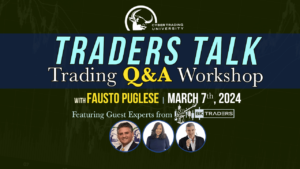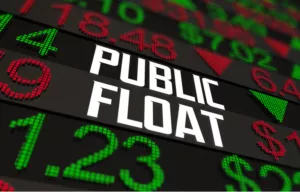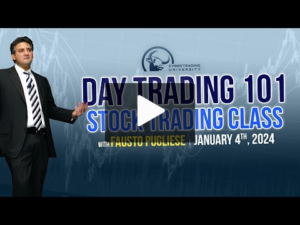
What's a Bull Market vs Bear Market?
If you know the bare minimum of the stock market, you probably have heard about the concept of the bull vs bear. In the investing world, the two are terms on the status of the market rather than living physical creatures. The terms of a bear market and a bull market have been around since as they were coined back in the 19th century and early 20th century.
If you could guess the difference between a bull and bear market. Most likely, you would assume bullish as the good one out of the two. That is partially true. A bearish market can be a good thing in some cases if you play your cards right. Back in my day as a pioneer day trader, there's was an old Wall Street saying, "Bulls and bears eat, pigs get slaughtered". This saying was supposed to warn investors to not be too greedy. If you as an investor don't know how to play the game, attempting to invest in the effort to make an excessive amount of money in a very short period can be a huge risk at a loss of capital.
What is the Difference Between a Bull vs Bear Market
Let's get straight to the answer...
↑ A bull market means the market is up. ↑
↓ A bear market means the market is down. ↓
The answer doesn't get simpler than that, but if you want more knowledge about the bull vs bear market. Then let's dive deeper into the subject!
The Bull in the Stock Market
When a bull goes for an attack, it will charge and thrust its horns upwards. This signifies...
- GDP is high
- Stocks are rising
- Unemployment is low
- Interest rates are low
- Inflation is low
- Consumer confidence is high
- Bonds go down
- Most importantly the economy IS doing well.
Let's say you as an investor are feeling bullish, that means your optimistic that the market is on the rise. Stocks you invested low are going to rise in price. Finding stocks to invest in is usually very easy during a bull market since everything is rising. But not all good things last forever, disasters arise in the economy. When that disaster makes its hit on the stock market, its called a bear market.
If the federal reserve deems inflation to be too high (slow market down) they will implement something called contractionary policy which would slow the economy by increasing taxes, increasing interest rates (both to discourage spending)
Story Behind the New York Charging Bull
The New York monument, "The Charging Bull" is a statue that stands in Manhattan's Financial District. Thousands of tourists and workers pass it every day. The statue of the Charging Bull was illegally dropped at Wall Street in 1989 by a Sicilian artist named Arturo Di Modica. Modica did this as an act of gratitude to America for enabling the success of his career. But, the Charging Bull was intended to be a sign of motivation. The statue was made in wake to the 1987 stock market crash (Black Monday, we will talk about it later). Modica wanted to create a message to the American people, that even in desperate times, you must remain strong and keep on fighting, like a bull.
The Bear in the Stock Market
When a bear goes for an attack, it will swipe its claws downwards. This signifies...
- A recession is approaching
- Prices are going down
- Unemployment is high. Businesses aren't doing well in the market, as a result, more employees will be laid off
- The economy is NOT doing well.
Usually, bear markets are very short but can be devastating, meaning it can be tough to consistently sell your stock before the stock market comes crashing down. A bear market simplifies the opposite of a bull market
Now let's say you are very pessimistic with the state of the market and expect stocks are going to drop, you are bearish. Even if a market is in a recession and many are losing, being bearish can be to your gain. You can sell your stock before the market becomes bearish, then once the market is bearish, buy the stock when it's cheap.
If the federal reserve wants to upstart the economy they will implement an expansionary policy that gives incentives to spending by lowering taxes, lowering interest rates, with interest rates falling, bonds seem less attractive to people and stocks become higher in demand.
A bear market is much more uncommon than a bull market and like said before, is usually short-lasted. Yet there were some infamous cases in United States history where the bear market ruled for as long as a year or made a huge dent in finance history, implementing laws to prevent a similar disaster from happening again
Examples of Bear Markets
- Wall Street Crash of 1929- The most notorious stock market crash in United States history. It happened on October 29, 1929, known as Black Tuesday (Kinda like Black Friday but way worse for the economy). The Wall Street Crash of 1929 was a 4-day collapse of stocks where Dow Jones Industrial Average dropped 25 percent. Stockholders would lose roughly more than $40 billion dollars. Americans would start to lose their jobs and homes due to the rough economy. By the end of 1930, the Great Depression would begin.
- Black Monday- October 19, 1987, was the greatest one-day percentage decline in United States history, Black Monday. The market plunged 20% in the S&P 500 and Dow Jones Industrial Average resulting in a vicious bear market. Black Monday was so devastating, circuit breakers (Known as trading curbs) would be installed to prevent it from happening again.
- 2008 Financial Crisis- The movie "The Big Short" (2015), it is about three stories leading up to the 2007 housing market crash. The 3 group protagonists made a lot of money from the collapse of the market just because they foresaw it through their research and hard work. The 2008 Financial Crisis was the worst economic disaster to happen since the Great Depression. It would get its own name, the Great Recession. Again, thousands would lose their jobs and homes due to the bear market lasting for approximately 18 months.
What is Better, a Bull Market or Bear Market?
The two biggest differences in a bull vs bear market are the time frame of investments. In a Bull Market, an investor would expect to earn their profits in the long game. This means to invest early in stock and sell later once that stock's price has reached its peak.
In a bear market, it's much more dangerous when it comes to investing. Since prices will continue to fall in a time like this, the chances of a loss are much greater. The way to approach an investment during a bear market is short and safe investments.
In the end, it's always best to see how the market is doing by doing your research before making your investments. The bull and the bear can create a great influence on the stock market, which could be the determining factor on whether you make a profit or lose the game.



